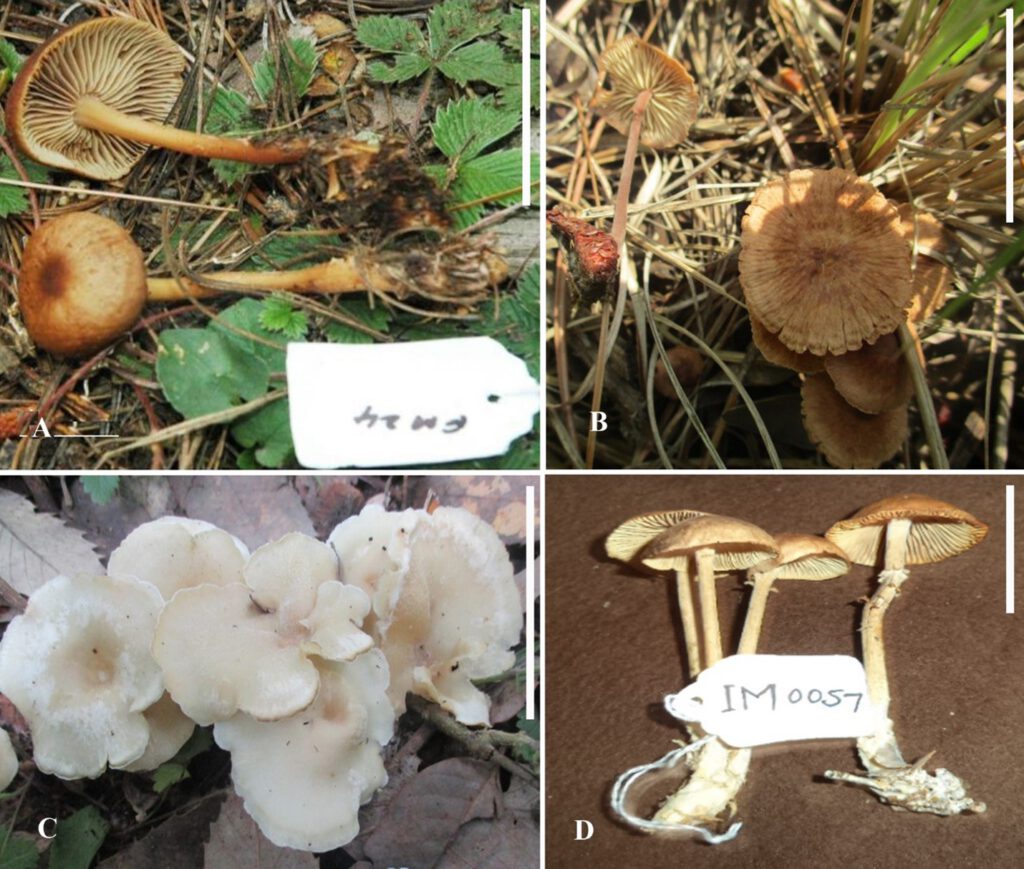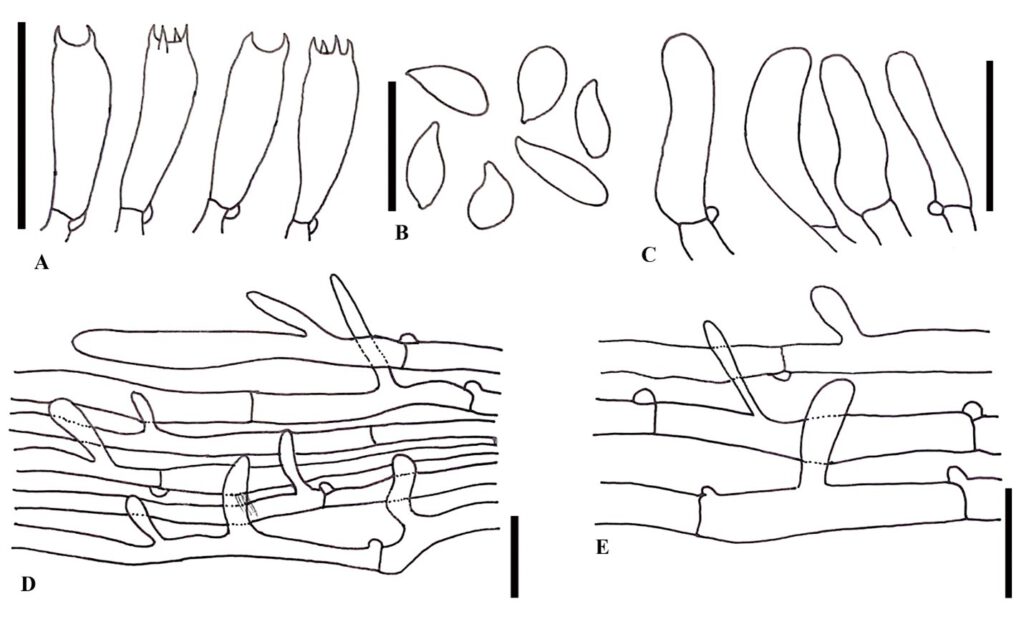Collybiopsis biformis (Peck) Halling, in Antonín, Halling & Noordeloos, Mycotaxon 63: 363 (1997) Fig. 64, 66
MycoBank number: MB 437617; Index Fungorum number: IF 437617; Faces of fungi number: FoF 10622;
Basidiocarps medium-sized. Pileus 20−40 mm in diam., convex, umbilicate to slightly depressed disc, dry, with smooth margin, reddish brown (10R4/4) to dull reddish (10R6/3). Lamellae adnate, thin, subdistant to close, whitish pink (7.5Y9/2); edges even; lamellulae unevenly distributed. Stipe 23−33 × 6−9 mm, reddish brown (5YR4/6), equal, somewhat broad at the base, laterally compressed and longitudinally grooved, straight, covered with white (2.5R9/2) pubescence. Odour and taste not observed. Basidiospores (3.5−) 3.8−6.8 (−7) × (1.7) 1.8−2.7 (−3) µm, L × W= 5.8 × 2.4 µm, Q = (1.9−) 2−2.8 (−2.9), Qe = 2.4, lacrymoid, inamyloid, smooth. Basidia 11.9−15.1 × 3−4.3 µm, clavate, 4-spored. Pleurocystidia absent. Cheilocystidia 17.0‒30.0 × 5.0‒7.5 µm, sub- cylindric contorted to strangulated or variously lobed. Pileipellis composed of hyphae, 2.6–4.5 µm diam., thick-walled (0.5–0.8 µm), branched, radially oriented outgrowths of 13.5–16.6 µm long, cylindrical. Stipitipellis hyphae 2.0–3.5 µm in diam, thick-walled (0.75–0.9 µm wide), arranged in parallel. Caulocystidia contorted to irregularly lobed, 11.3–18.6 µm long. Clamp connections observed in all tissues.
Habitat – Grows on gravely soil in an Oak forest dominated by Quercus incana Royl.
Material Examined – Pakistan, Province Khyber Pakhtunkhwa, District Swat, 34°47′ N, 72°17′ E. 2100 m a.s.l,, 14 July, 2015, A. Naseer and A. N. Khalid, ASSW28 (LAH35820).
Notes – Collybiopsis biformis is characterized by a reddish brown, convex, dry, striate pileus with smooth margin; white, thin, subdistant lamellae with adnate attachment; equal, slightly pubescent stipe; lacrymoid and inamyloid spores; sub-cylindric contorted to strangulated or variously lobed cheilocystidia; radially oriented outgrowths on pileus hyphae, contorted to irregularly lobed caulocystidia. Our description agrees quite well with the original description, except in spore size (6.4–8.6 × 3.2–4.4 µm), basidia 19.6–28 × 4.2–5.6 µm, and cheilocystidia 21.6–50.8 µm, which are significantly larger in the original description (Halling 2004). This collection represents the first report of C. biformis for Pakistan.

Figure 64 – Basidiocarps of A. Gymnopus ocior; B. G. bunerensis; C. Collybiopsis biformis; D. G. subnudus in the field. Scale bars: A-D=50 mm.

Figure 66 – Collybiopsis biformis (LAH35820: New geographical record). A Basidia. B Basidiospores. C Cheilocystidia. D Pileipellis. E Stipitipellis. Drawings by Muhammad Ishaq. Scale bars: A, C = 20 mm, B, D, E= 10 μm.
